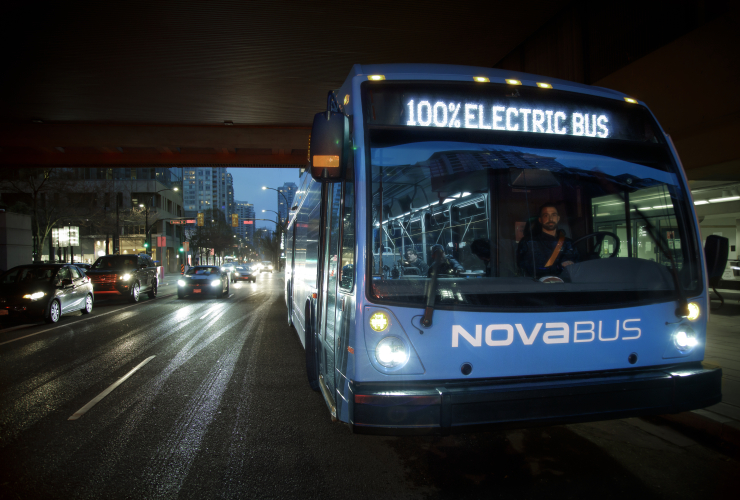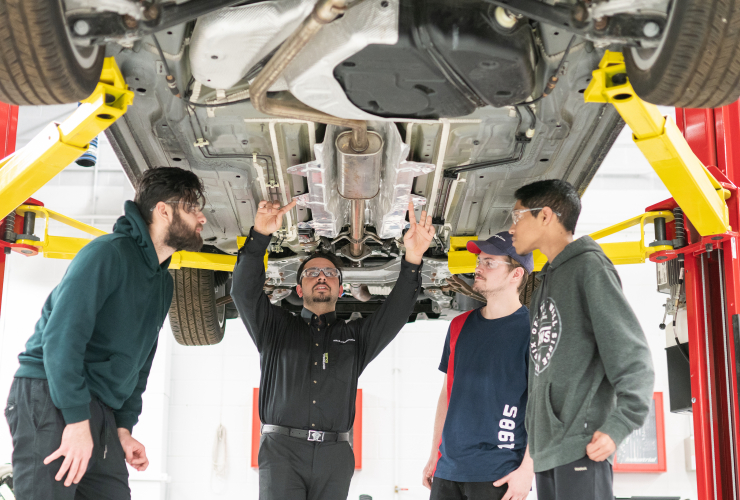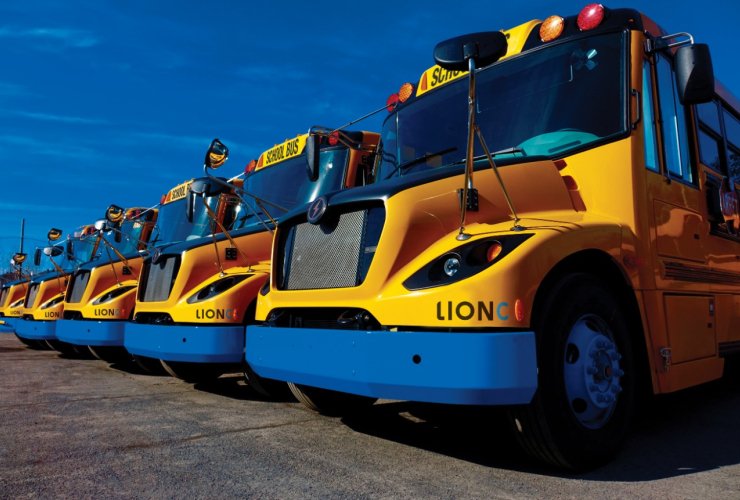Final weekend! We urgently need your help to fund bold climate journalism by June 3
The transition to electric school buses isn’t happening quickly enough, concludes a report released in April by the Canadian Electric School Bus Alliance (CESBA).
The report, prepared by Dunsky Climate+Energy, recommends the federal government set Canada-wide targets for electric school bus sales, extend federal funding, and work with provinces to iron out supply chain barriers. With that support, all new school bus purchases could be electric by 2040, or more ambitiously, 2035.
For the past two years, I’ve been working on an electric school bus campaign with For Our Kids, a Canada-wide network of parents advocating for climate action. We’re also one of CESBA’s steering committee members. We’ve been working together to share the strong body of evidence showing the health and climate benefits of electric school buses. The sooner we make the switch, the better.
Numerous studies link diesel exposure to negative health impacts. According to Health Canada, diesel exhaust exposure is linked to an increased risk of lung cancer, heart problems, respiratory illness, asthma, and more.
A recent study showed that even short-term exposure can interfere with brain function. In April, the Canadian Partnership for Children's Health and Environment (CPCHE) and partners including For Our Kids called on the government to speed up the transition to electric school buses.
"Buses operate in close proximity to schools, meaning that all schoolchildren, not only the kids riding the buses, can be exposed and affected by diesel exhaust,” says Dr. Erica Phipps, executive director of CPCHE.
There are also compelling climate reasons. As a whole, road transportation accounts for 21 per cent of Canada’s GHG emissions. School buses are a small fraction of this but because they’re publicly funded and travel predictable routes, they are one of the easiest sectors to electrify.
But perhaps the most compelling reasons come from the kids who ride the buses.
The Greater Victoria School District is one of a number of school boards in B.C. that has dived into electric school buses. Four out of their six buses are now electric. In March, I went down there to shoot a video showcasing their experience.
First I spoke with board chair Nicole Duncan, who explained the switch aligned with their strategic plan for sustainability. I spoke with fleet and transportation manager Eric Fisher, who said that when he totalled up the projected cost savings, electric buses were a “no-brainer.”
Then I met with a group of students who rode the electric bus every day or for field trips. The plan was to shoot some “B-roll” kids getting on and off the bus, sitting on the bus, that kind of thing. But the students were so enthusiastic, I decided to ask them a few questions. Their answers blew me away.
The buses felt cleaner, said one student, fresher. Another said it was easier to talk with friends or just think. Most importantly, they were excited to be doing something about climate change.
They knew we needed to reduce emissions and that electric vehicles were part of the solution. What struck me most was that they really cared. “It’s reassuring,” one girl said, “just to know we’re helping the planet, step by step.”
The shift to electric school buses is already underway. The federal government has dedicated funding for school bus electrification through the Zero Emission Transit Fund and other programs.
P.E.I. has committed to 100 per cent electrification of its public fleet by 2030.
Quebec plans to electrify 65 per cent of its fleet by 2035.
B.C. offers substantial financial support of $100,000 to $200,000 per electric bus.
But none of the other provinces and territories have yet put in place targets or funding — including Ontario, which has the largest school bus fleet in Canada, with 20,000 buses.
The recent report shows that without financial support, electric school buses are still more expensive than diesel buses over their 12-year lifespan. But with current federal funding, they have a payback period of just 4.4 years for a Type C bus. And with credits from the Clean Fuel Regulation coming this year and potential earnings through vehicle-to-grid technology, that could come down to just 2.7 years. After that, savings can go into education.
However, what the report’s analysis doesn’t include are the savings in avoided health-care costs — estimated as $11,800 per bus, over its 12-year lifespan, according to a 2022 report by the Pembina Institute. Nor does it factor in the savings from reducing our emissions sooner rather than later.
After all, what really matters is not the balance sheet with a few thousand dollars here or there. As the kids at the Greater Victoria School District remind us, it's the future that matters — and we must use all our tools, including electric school buses, to make it the best one we can.
Ruth Kamnitzer is an organizer with For Our Kids, a national network of parents, grandparents and others working for climate action; a freelance writer; and previously an environmental educator.






Comments